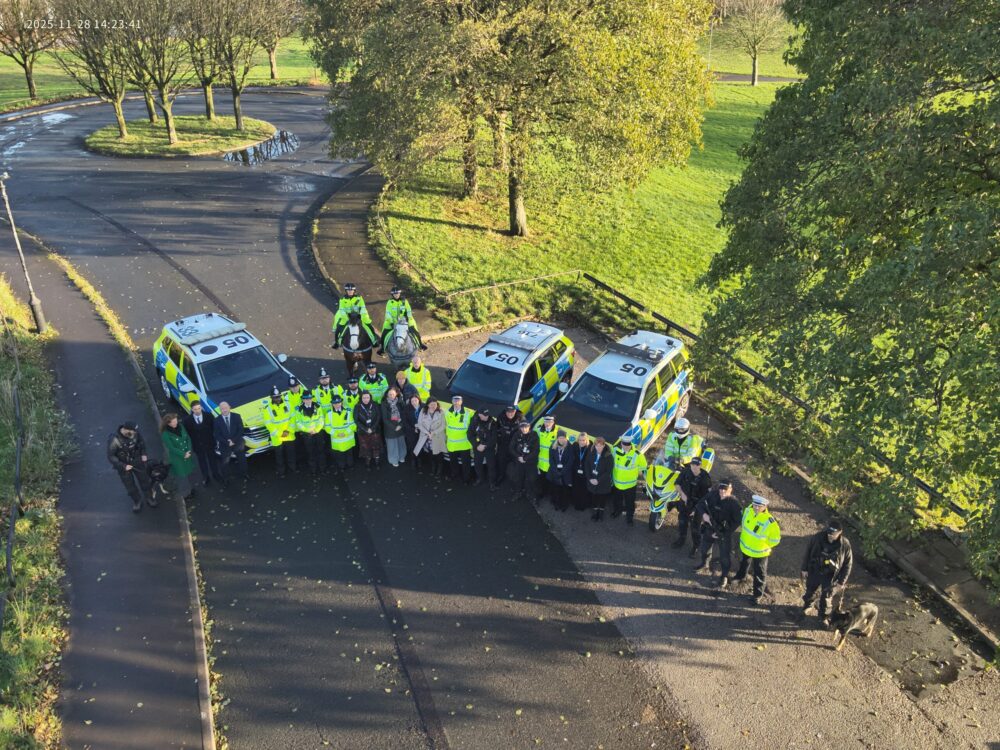
Community
Liverpool’s Covid-19 testing pilot led to a reduction of more than a fifth in Coronavirus cases
4 years ago

An evaluation of Liverpool’s pioneering SMART community testing pilot by academics has found it led to a reduction of more than a fifth in Covid-19 cases.
Last November, the city became the first in the world to have a voluntary mass testing programme for people without coronavirus symptoms.
There were more than 50 sites across the city during the peak of the surge testing period, with army personnel supporting the city’s response.

A SMART (Systematic, Meaningful, Asymptomatic/Agile, Repeated Testing) approach was taken in order to adapt to changing circumstances such as new variants and keeping essential services open.
Now, a study by the University of Liverpool and the Department for Health and Social Care (DHSC) has concluded that community testing led to an 18% increase in case detection and a 21% reduction in cases compared with other areas up to mid-December, after which the Kent variant surge made it difficult to compare areas.
During the evaluation period (6 November 2020 to 30 April 2021), 283,338 (57%) Liverpool residents took a test using a lateral flow device (LFT). The devices worked as expected, identifying most cases with high viral load, which were likely to be the most infectious.
A total of 6,300 individuals declaring no symptoms tested positive by LFT (case positivity: 2.1%), with 22,567 individuals declaring symptoms tested positive by PCR (case positivity: 14.8%).
Researchers found that:
– Testing saved around a day in the time it takes to identify someone as likely to pass on the virus, and by being able to test more people
– There was strong public awareness of, and a largely positive attitude toward community testing, motivated by shared identity, civic pride and a wish to protect others
– Co-ordination of testing with timely data integrated across NHS and public health organisations was critical to success

However, people living in more deprived areas were less likely to take up testing and more likely to test positive. Fear of loss of income in self-isolation was a significant factor in this inequity in testing.
The Combined Intelligence for Population Health Action (www.cipha.nhs.uk) system used to coordinate testing is now expanding to other regions and could contribute to building up a ‘national grid’ of public health data systems needed to improve pandemic responses.
Testing centres for people without symptoms have continued to be a core part of Liverpool’s COVID-19 response, along with the vaccine rollout.
Liverpool’s Director of Public Health, Matthew Ashton, said:
“The Covid-19 testing pilot was cutting edge public health work in action and a substantial number of people in the city embraced it.

“It helped cement regular testing as a way of identifying those with the virus who would have been unknowingly spreading it to others, and contributed to the fall in the infection rate we saw in Liverpool over the course of the pilot. It proved to be hugely valuable at a point in time when the vaccines had not yet been rolled out.
“It also reinforced challenges we face across all areas of public health, such as how to reach those in deprived areas, and helped us to work together with partners to address them.
“We hope our learning can be used by Governments here and abroad, not just in managing Covid-19 but also in future pandemics.”
Professor Iain Buchan, Dean of the Institute of Population Health and lead for the evaluation of Liverpool community testing pilot, said:
“Introducing rapid antigen testing for people without symptoms of COVID-19, living or working in the City of Liverpool in November 2020, saw cases fall by a fifth, while the ability of the public health service to detect new cases – with or without symptoms – rose by a fifth.
“No other city or region was exactly like Liverpool at the time in terms of the pandemic or its restrictions, but with careful analysis of data from across England, we have shown that rapid antigen testing was a useful addition to other public health measures.”
“The lateral flow devices performed as expected from biology, identifying people with bigger loads of virus, more likely to be infectious – and doing so in less than an hour they enabled isolation a day sooner than was possible with PCR tests.

“Effective testing for the COVID-19 virus, however, is much more than a test. People in disadvantaged areas, and those with fewer digital resources, found it more difficult to access testing or to afford to isolate. The local public health team was vital in adapting testing to reach as much of the population as possible. Local approaches were also key to understanding how to offer daily testing as an alternative to quarantine for contacts of cases.
“The city-wide teamwork and data integration needed to deliver community testing in Liverpool are assets likely to outlast the pandemic. A national grid of intelligence-led local public health systems is needed to resist the next pandemic and to recover from this one – an important conclusion of our evaluation – a bigger picture than testing for virus antigen.”









 Subscribe
Subscribe Follow Us
Follow Us Follow Us
Follow Us Follow Us
Follow Us Follow Us
Follow Us Follow Us
Follow Us











